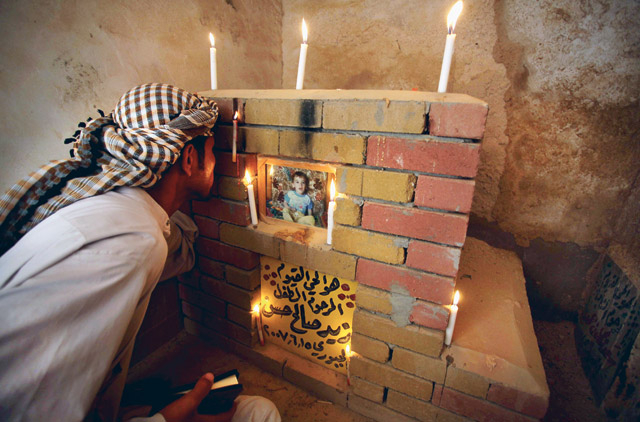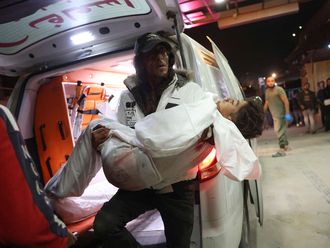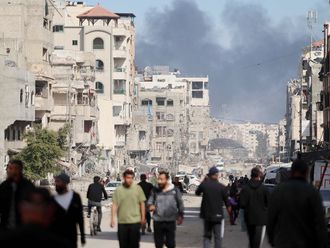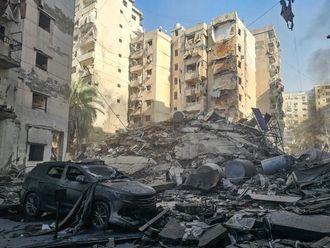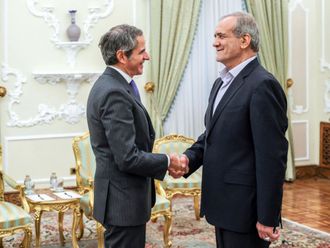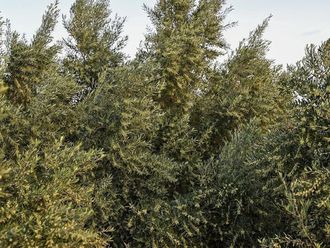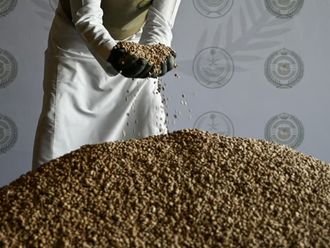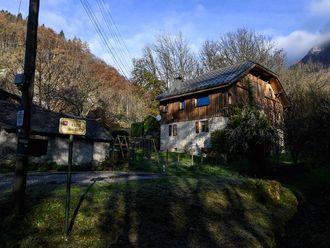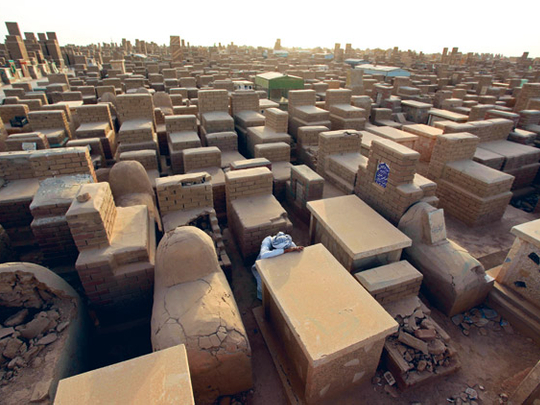
Najaf, Iraq: Pictures of the two brothers stare out, side by side, separated by the gulf of a quarter century.
Rahim Jabr died in 1981, a foot soldier in the bloody eight-year war with Iran, while Naeem was a casualty of the savage sectarian fighting that gripped Baghdad in 2006.
They were reunited in the end, their tombstones placed side by side surrounded by a decorative metal cage in the vast Shiite graveyard of Najaf in southern Iraq.
There is no holier place on earth for Shiites to be buried than this city of the dead, stretching to the horizon from the doorstep of the tomb of Imam Ali, the son-in-law of Prophet Mohammad (PBUH).
While Sunnis put their dead in local plots, Shiites for a 1,000 years have been burying their fallen here and everyone has at least one relative in the graveyard.
That has made it a kind of map to Iraq's history, at least that of its Shiite majority.
Its natural disasters, wars and tragedies are etched across the tombstones densely packed into every square foot of the dusty, sun-blasted expanse.
The violence that has overwhelmed Iraq since 2003, much of it directed against Shiites, fed a massive expansion of the graveyard, swelling it by 40 per cent to about three square miles (7.5 square kilometres) — triple the size of the US's Arlington National Cemetery — according to Ehsan Hamid Sharif, the official in charge of receiving bodies.
But in a measure of the country's gradual return to stability, those working at the cemetery say in recent years the flood of bodies has slowed. "We used to receive 200 to 250 bodies a day, now it's less than a hundred," Najah Abu Seiba, the patriarch of a family that have been gravediggers here for three centuries, said.
"We used to work 24 hours a day."
At least 85,000 Iraqis were killed from 2004 to 2008, according to a report by Iraq's Human Rights Ministry last fall, although those figures are considered a minimum and do not encompass the entire length of the war.
Various ethnicities
The figures included Iraqi civilians, military and police from all the country's sects and ethnicities.
On a recent day this month, the cemetery was peaceful, the wind whipping colourful flags flying over the graves, with only the occasional three-wheeled transport buzzing by, taking relatives to graves.
"My mother, father and brothers are buried here," Mouayed Hamed Al Lami said as he brought the wife of his uncle to be buried in the cemetery's newer section.
His relatives clambered out of the minibus hired to carry the body from Baghdad, a three-hour drive away.
"We are burying her here because it is the place of Imam Ali," he said, gesturing at the distant golden dome of the tomb shrine. "It is the closest place to heaven."
The violence has not ended completely.
That same day, 119 people died across Iraq in bombings that mostly targeted Shiites.
So by evening, minibuses stacked with coffins of many of the victims began pouring into Najaf.
But the slowing pace of the dead over the past year has workers hopeful that the era of chaos ushered in by the 2003 US invasion and the fall of Saddam Hussain may be easing.
Abu Mohammad Al Sudani says he now even has the time to try to organise the section of the cemetery he manages, a corner called the "Garden of Martyrs," dedicated to the dead of the Mahdi Army militia loyal to anti-US cleric Moqtada Al Sadr.
They lie in brightly decorated graves adorned with plastic flowers and large portraits of young men dressed in black and often swathed in bandoliers of ammunition.
The section has grown every year since 2004, first with the clashes against American forces, then the sectarian wars of 2006-2007 when Shiites and Sunnis were killing each other at a murderous rate, and finally in the 2008 battles with the Iraqi army. In recent years, though, its growth has slowed.
"It used to be clashes with the occupier, now those killed are from assassinations, explosions or they died in detention," Al Sudani said.
He estimated over 4,000 were buried in his section.
A mother dressed in black, accompanied by her son and daughter, weeps at one of the Mahdi Army graves from 2006.
They leave behind a smoking stick of incense. Her son walks with a limp.
Al Sudani said that with more time on their hands, they are now looking to damp down the colourful riot of the tombs and standardise their look with uniform grave markers and martyrs' pictures.
"Back then, we didn't have time to organise the graves," he said.
Organisation and uniformity of style, however, are totally absent from the rest of the graveyard where tombstones from many eras jostle for room.
The graves get older closer to the Imam Ali shrine and the old city that surrounds it, with one section dominated by the fallen from the Iran-Iraq war — a titanic conflict that claimed an estimated million lives.
At the time, the style was a one-metre-high brick grave marker with a black and white photo of the dead surrounded by a decorative cage. They are everywhere in this section, interspersed with later tombs from other family members.
In one, three brothers share the same cage. They all died in 1981.
The cemetery itself has twice been the scene of heavy fighting.
Call to revolt
Wide paths cut through the densely packed older sections, cut by Saddam's army as it crushed a Shiite uprising after the 1991 Gulf War, when President George Bush called on Iraqis to revolt.
The rebels took refuge in the narrow spaces among the crowded tombs and so the Iraqi army bulldozed its way through the graves of its fellow soldiers.
To this day, piles of wrecked cages from the graves remain stacked on the roadsides. American Bradley tanks and Humvees would drive down the same paths 13 years later in 2004 battles with the Mahdi Army, who similarly hid among — and in — the graves and tombs.
Among the tombstones are the room-size family crypts built by the wealthy, often topped by domes.
Many now have splintered door and window frames after scavengers pulled off the metal doors to sell for scrap during the lean years of the UN sanctions in the 1990s.
Inside the crypts, it smells of rose water, sprinkled by visiting family members and sold by the case along the cemetery's main thoroughfares.
Many of these crypts have underground burial chambers where militiamen used to hide in ambush for US soldiers.


